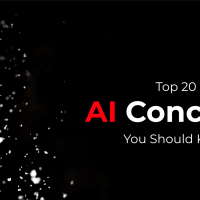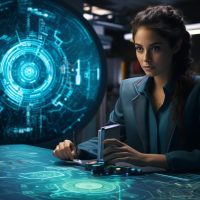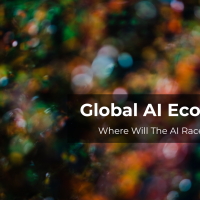Ghislaine Boddington presents “Me and My Digital Twin”, a research documentary, on BBC podcast. The episode explores how digital human twin technology is providing real-life solutions with innovations that influence self-expression, connection, and the way to preserve legacies. Amongst the many projects, the episode also highlights Leonardo da Vinci AI agent, created by Dinis Guarda and Wisdomia.ai, Ztudium’s proprietary AI.DNA technology. The episode is set to air on BBC World Service on Saturday, November 30th, at 12:06 GMT.
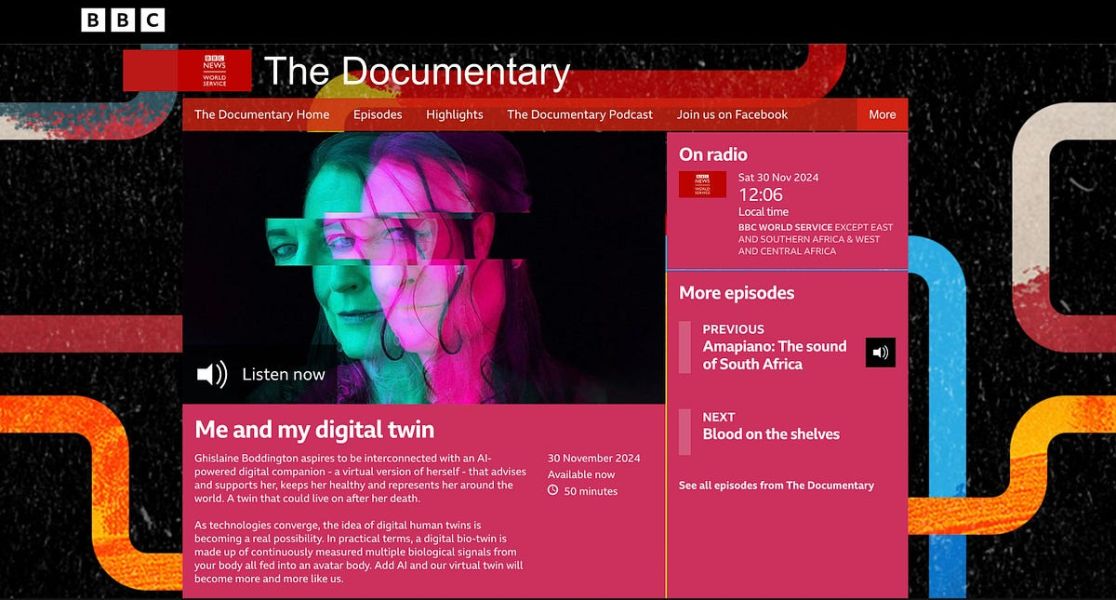
Written and presented by Ghislaine Boddington, “Me and My Digital Twin” is set to air on BBC World Service on Saturday, November 30th, at 12:06 GMT. The episode explores the groundbreaking potential of digital twin technology—a concept that allows for the creation of virtual replicas of physical objects or beings.
Ghislaine Boddington is a Senior Researcher at the University of Greenwich and Creative Director of body>data>space. She is a leading expert in digital identity and virtual interaction, and has, for decades, focused on the blending of the virtual and physical body through converging telepresence, sensors, motion capture, wearables, gesture interfaces, biofeedback, robotics, virtual worlds mixed realities into experiential environments.
The “Me and My Digital Twin” episode provides an overview of how this technology can influence health, lifestyle, creativity, and identity. Featuring Dinis Guarda, the Leonardo da Vinci AI agent, and Wisdomia.ai, it demonstrates how artificial intelligence (AI) and digital twin innovations are shaping the future of human and technological progress.
Listeners will learn about virtual heart models transforming healthcare and how digital artists are blending physical and virtual identities. The discussion explores the impact of these advancements on self-expression, connection, and preserving our legacies. The programme also features insights into innovative projects such as Dinis Guarda’s Leonardo da Vinci AI agent and Wisdomia.ai, an advanced digital twin platform. By drawing parallels with historical moments like the Apollo 13 mission, Me and My Digital Twin illustrates how digital twins can empower individuals, foster self-reflection, and drive human evolution.
This exploration comes at an important time as digital twin technology shifts from industrial uses to more human-focused applications, raising both excitement and ethical concerns. From healthcare advancements to cultural applications, the documentary highlights a range of use cases and sheds light on the moral considerations of creating a “digital you.”
The genesis of digital twin technology
Digital twin technology was first conceptualised during the Apollo 13 mission in 1970. When an oxygen tank exploded, leaving astronauts stranded 200,000 miles from Earth, NASA engineers used spacecraft simulators to recreate the conditions of the damaged spacecraft. This method allowed them to devise solutions that ultimately brought the astronauts safely home. This event is widely regarded as the birth of digital twins.
Since then, this technology has been used in many areas, including manufacturing, architecture, healthcare, and more recently, human modelling. Ghislaine Boddington explains this progression:
“What began as a tool for simulating spacecraft systems has now grown into a sophisticated interface between the physical and digital worlds, enabling us to replicate everything from cars and buildings to the complexities of the human body.”
The “Me and My Digital Twin” episode begins with a compelling question from host Ghislaine Boddington:
“Imagine that when you are born, a digital version of you is also created—a virtual you that is tethered to you, owned by you, and grows up, learns, and works with you. How might this reshape our understanding of ourselves and our potential?”
It explores the origins, uses, and ethical issues surrounding digital twin technology, tracing its beginnings to NASA’s Apollo 13 mission. It also looks at how the idea has developed to include digital replicas of people, providing a view of a future where our virtual selves could become an important part of our lives.
Digital twin technology: A revolution in real-time modelling
Fundamentally, the digital twin technology creates virtual counterparts of physical objects or entities. These twins are dynamic and constantly updated with data, enabling real-time simulation, analysis, and decision-making.
According to Dinis Guarda, Author, Researcher, influencer in AI and 4IR technologies, Founder of Ztudium, and creator of the platform Wisdomia.ai:
“Digital twins are not just about creating replicas; they are about empowering individuals to better understand themselves and their environments, making informed decisions, and extending their potential in ways previously unimaginable.”
Digital human twins represent the next leap in this technology. These virtual counterparts can mirror an individual’s health, behaviours, and even psychological states by integrating data from wearables, smartphones, and even implantable devices. As Boddington observes, “A digital twin isn’t just a copy; it’s a companion, a co-creator, and a legacy.”
The uses of digital twin technology
The documentary explores several real-world applications of digital twin technology, demonstrating its versatility across domains:
- Healthcare advancements
One of the most fascinating uses of digital twins is in healthcare. Professor Declan O’Regan, a cardiovascular AI expert, shows how MRI scans and AI algorithms are used to create virtual heart models. These models help doctors diagnose conditions more precisely and predict how lifestyle changes might affect long-term health. Declan explains: “With digital twins, we can integrate data from wearables and medical scans to create a constantly updated model of the heart, offering unprecedented insights into personal health.”
The Living Heart Project, led by Dassault Systèmes, is another example. This global initiative involves over 150 organisations working together to create accurate virtual heart models. These models are now being used in complex surgeries, including procedures in paediatric cardiology. As Steve Levine, the project’s lead, recounts, “Virtual twins allow surgeons to rehearse procedures multiple times, ensuring precision and reducing risks.”
- Sports and performance enhancement
Athletes are some of the first to embrace digital twins. Professor John Chalice from Penn State University explains how personalised digital twin models are transforming sports science. By studying biomechanics and movement, these models help athletes improve their techniques and avoid injuries. Chalice notes: “In the future, personalised digital twin models will become the standard, giving coaches and athletes a level of precision that was previously unimaginable.”
Elite athletes can train against their digital twin in virtual settings, identifying and addressing weaknesses in their performance. As shown in the programme, this two-way feedback between the physical and digital self supports ongoing improvement.
- Creativity and cultural integration
The artistic uses of digital twins are just as intriguing. Samantha Tauber, a musician and creative innovator, has created a digital twin called Vinci—a six-foot-tall Amazonian warrior avatar inspired by Leonardo da Vinci. Vinci acts as both a performer and a collaborator, enabling Tauber to expand her creativity into virtual worlds. She shares: “By embodying Vinci, I’ve been able to channel my inner warrior spirit, empowering my real-life self as much as my digital persona.”
These creative uses show how digital twins can improve personal identity and artistic expression, connecting the physical and virtual worlds.
Dinis Guarda, Wisdomia.ai, and the Leonardo da Vinci AI Agent
Dinis Guarda, a pioneer in AI and blockchain technologies, plays a central role in the documentary. His projects, including Wisdomia.ai, exemplify the innovative potential of digital twins.
Wisdomia.ai
Wisdomia.ai is an innovative platform that blends education and entertainment, providing users with an immersive experience in history, philosophy, and futuristic ideas. Launched in 2024 by Dinis Guarda, the entrepreneur and CEO of Ztudium, Wisdomia.ai seeks to change the way people learn by combining advanced artificial intelligence with interactive, engaging content.
Wisdomia.ai allows users to interact with AI avatars based on famous historical figures like Albert Einstein, Socrates, Cleopatra, and Leonardo da Vinci. These avatars are designed to reflect the wisdom and ideas of their real-life counterparts, giving users a unique chance to explore their teachings and apply them to modern challenges.
The platform offers a variety of engaging features, including interactive storytelling, educational games, virtual reality (VR) simulations, and AI-led ethical debates. Users can personalise their learning journey by choosing specific historical figures or topics,and tailoring the experience to their interests. The gamified elements of the platform also encourage participation, with rewards for progress and engagement.
Wisdomia.ai is focused on fostering critical thinking and collaborative problem-solving. In addition to individual learning, users can take part in group discussions, solve ethical problems, and work on projects aimed at creating ideal societies. These activities reflect real-world issues, encouraging participants to use their knowledge in practical ways.
The development of Wisdomia.ai involved experts in AI, education, and interactive media, who carefully designed the AI companions based on influential historical figures. The platform’s initial pilot included avatars of notable people like Albert Einstein, Cleopatra, Hedy Lamarr, and Ada Lovelace, selected for their important contributions to human progress.
Wisdomia.ai follows a freemium model, offering basic features for free while charging for premium subscriptions that provide access to extra content and exclusive features. The platform also partners with educational institutions and organisations to reach a wider audience, providing tailored solutions for different users.
The Leonardo da Vinci AI Agent
Wisdomia.ai is a pioneering edutainment platform where advanced artificial intelligence converges with history, philosophy, and futuristic ideas to create a unique, immersive learning experience. Established in 2024 by Dinis Guarda, entrepreneur and CEO of Ztudium, Wisdomia.ai brings the wisdom of history’s most influential figures to life, combining education with entertainment in a way that captivates and inspires modern learners.
The platform features AI avatars modelled after iconic personalities such as Albert Einstein, Cleopatra, and Leonardo da Vinci. These avatars utilise Wisdomia’s proprietary AI.DNA technology and advanced large language models (LLMs) to simulate the knowledge, thought patterns, and conversational style of these historical figures. Users can engage in meaningful dialogues, participate in interactive storytelling, and explore philosophical and scientific ideas, making learning a deeply engaging process. Wisdomia.ai provides a range of cutting-edge features, including:
- Interactive learning: Users can converse with AI avatars, gaining insights into historical philosophies, art, science, and ethics.
- Personalised experiences: The platform enables users to tailor their learning journeys by selecting topics, historical figures, and levels of engagement.
- Gamified elements: By completing tasks, solving ethical dilemmas, and participating in debates, users earn rewards, making the process both fun and educational.
- Immersive technologies: Virtual reality (VR) and mixed reality (MR) experiences allow users to step into historical moments or futuristic scenarios, enhancing their understanding through experiential learning.
- Collaborative opportunities: Users can join group discussions, debates, and projects that mirror real-world challenges, fostering teamwork and critical thinking.
The future of digital twins
The documentary paints an optimistic yet cautionary picture of the future. Digital twins could revolutionise healthcare by acting as lifelong health partners, offering personalised advice and predictive analytics. They could also enhance education, enabling virtual learning environments tailored to individual needs. In creative fields, digital twins could become co-creators, sparring partners, and sources of inspiration.
However, as Boddington concludes, the success of digital twins depends on their ability to enhance and support our lives without compromising our identity: “A digital twin must be more than a tool; it must be a trusted companion that reflects our essence and evolves with us.”
Me and My Digital Twin is a groundbreaking documentary that explores the intersection of technology, identity, and ethics. By featuring visionaries like Dinis Guarda and innovations such as Wisdomia.ai and the Leonardo da Vinci AI agent, the programme highlights the transformative potential of digital twins while urging caution in their implementation.
As digital twins transition from industrial tools to personal companions, they promise to reshape how we live, work, and understand ourselves. Yet, as Boddington reminds us, the journey to this future must be guided by ethical considerations and a commitment to human-centric design. With its blend of technological insight and philosophical inquiry, the documentary offers a compelling vision of a world where the digital and physical seamlessly converge.
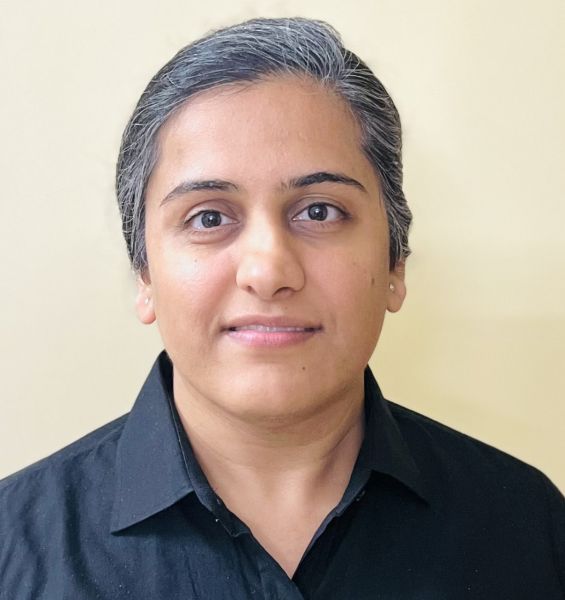
Pallavi Singal is the Vice President of Content at ztudium, where she leads innovative content strategies and oversees the development of high-impact editorial initiatives. With a strong background in digital media and a passion for storytelling, Pallavi plays a pivotal role in scaling the content operations for ztudium’s platforms, including Businessabc, Citiesabc, and IntelligentHQ, Wisdomia.ai, MStores, and many others. Her expertise spans content creation, SEO, and digital marketing, driving engagement and growth across multiple channels. Pallavi’s work is characterised by a keen insight into emerging trends in business, technologies like AI, blockchain, metaverse and others, and society, making her a trusted voice in the industry.







